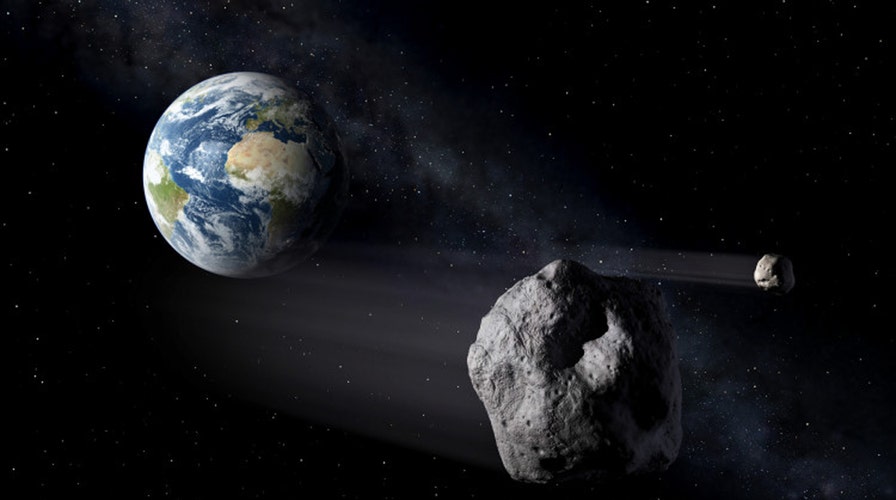Study: Giant asteroid strike 13,000 years ago had 'global consequences’
A giant asteroid hit earth 13,000 years ago and had 'global consequences’ causing mass extinction and more.
NASA may have updated its plan to protect the planet from asteroid strikes, but a space rock the size of a pickup truck zipped past the planet at a distance of approximately 1,830 miles on Sunday, the closest ever recorded.
And the space agency didn't see it until after it happened.
The asteroid, known as 2020 QG (formerly known as ZTF0DxQ), flew past the Earth from the direction of the sun, according to Business Insider, which first reported the news. The news outlet cited a tweet from amateur astronomer Tony Dunn.
62-MILE SPACE ROCK CAUSED MASSIVE ASTEROID SHOWER THAT HIT EARTH, MOON 800M YEARS AGO, STUDY SAYS
"Newly-discovered asteroid ZTF0DxQ passed less than 1/4 Earth diameter yesterday, making it the closest-known flyby that didn't hit our planet," Dunn, who is also the creator of orbitsimulator.com, wrote.
The object was detected approximately six hours after it flew past Earth's Southern Hemisphere at a speed of 27,600 mph, Paul Chodas, director of NASA's Center for Near Earth Object Studies, told the news outlet. "We didn't see it coming."
2020 QG is considered a Near-Earth Object (NEO) given its close proximity to Earth. However, given its size (between 6 feet and 18 feet wide), it is not considered a "potentially hazardous" NEO and likely would have broken up in the atmosphere
The object's size was estimated by the Sormano Astronomical Observatory.
"Potentially hazardous" NEOs are defined as space objects that come within 0.05 astronomical units and measure more than 460 feet in diameter, according to NASA. According to a 2018 report put together by Planetary.org, there are more than 18,000 NEOs.
A NASA spokesperson told Fox News that "similar asteroids" to 2020 QG "would have disintegrated in Earth’s atmosphere had they impacted." The spokesperson added that the agency is working on a "space-based infrared telescope that will have better capability to identify similar asteroids."
This is not the first time in recent memory that NASA has missed a NEO similar to 2020 QG. In February, researchers in the Netherlands discovered 11 "potentially hazardous objects" that are not on NASA's list of "potentially hazardous" near-Earth objects, using advanced artificial intelligence.
ANCIENT ASTEROID STRIKES ON MARS MAY HAVE 'PRODUCED KEY INGREDIENTS FOR LIFE'
NASA unveiled a 20-page plan in 2018 that details the steps the U.S. should take to be better prepared for NEOs, such as asteroids and comets that come within 30 million miles of the planet.
A recent survey showed that Americans prefer a space program that focuses on potential asteroid impacts over sending humans back to the moon or to Mars.
In April 2019, NASA awarded a $69 million contract to SpaceX, the space exploration company led by Elon Musk, to help it with asteroid deflection via its DART mission.
NASA Administrator Jim Bridenstine said in April 2019 that an asteroid strike is not something to be taken lightly and is perhaps Earth's biggest threat.





















